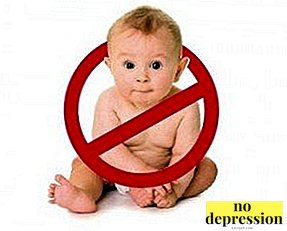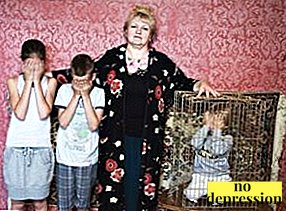Among various neurotic syndromes in children, a special place is occupied by cerebrostenia syndrome.
He is the result of pathologies of pregnancy and childbirth.
Strong stress can also affect its appearance.
The disease creates serious problems for the child in the educational field, communicating with peers. Pathology can be corrected if time to establish a diagnosis.
About the disease

Infantile cerebral syndrome is in weakness and "impotence" of the brain.
It is based on a violation of the mechanisms of adaptation and self-regulation of the nervous system.
It is diagnosed in 3-4% of babies.Both boys and girls are affected.
Usually, asthenia manifests itself in a child at the age when he is forced to adapt to new conditions, that is, he experiences a certain stress.
This is the age of admission to kindergarten (3-4 years) and school (7 years). Aggravation occurs in the spring and autumn periods.
Pathogenesis is based on organic brain damage, namely the destruction of connections between neurons due to traumatic factors.
In other words, the child pathological changes occur in the wombleading to residual cerebral insufficiency.
Certain areas of the brain are affected, which subsequently manifests itself in various neurological symptoms. That is, cerebrastia is a consequence of cerebral insufficiency.
Causes

The main cause of cerebrosthenic syndrome is organic changes in brain structures.
They occur under the influence of provoking factors:
- Hard pregnancy. Here play a role: strong toxicosis, infections, incompatibility for the Rh factor, hypoxia. Also, asthenia can manifest due to gestational diabetes.
- Hard labor. Long anhydrous period, entanglement of the umbilical cord, weakness of labor, placental abruption leads to asphyxiation, which is then expressed in cerebral insufficiency.
- Use by a woman during pregnancy drugs, alcohol, nicotine.
- Infections affecting the central nervous system: meningitis, encephalitis, poliomyelitis. Cerebrastenia is a symptom of these diseases and persists for a long time after recovery.
- Head injuries. Asthenia may not manifest immediately, but as a distant consequence of TBI. The severity depends on the severity of the injury.
- Heart and kidney diseases. In these diseases, there is a violation of blood circulation, poor supply of oxygen to the brain.
- Stress. Prolonged emotional stress is a trigger for the development of cerebrastenia.
The weak nervous system of the baby is unable to cope with excessive loads.
Symptoms and signs

Cerebrastenic syndrome can occur in two types: hyperdynamic and hypodynamic.
Each has its own distinctive features.
Symptoms hyperdynamic cerebral flow:
- Excessive activity, fussiness, quickly replaced by fatigue.
- Emotional irritability.
- Bad night's sleep and long night.
- Weather dependence, poor adaptation to changes in external temperatures.
Manifestations hypodynamic type:
- Lethargy, fatigue.
- Drowsiness.
- Lack of interest in toys.
- Bad appetite.
- Slow weight gain.
- Fear of mobile games, riding on swings and roundabouts.
- Constant screaming.
- Delay in the development of speech.

Preschoolers are afraid to be alone, they have nightmares.
Children lack curiosity, interest in the new. They poorly adapted in children's groups.
At school, asthenia is manifested by difficulties in learning, communicating with peers. The child does not master the school curriculum, cannot memorize poems, retell the text.
Present cognitive impairment: poor attention, perception, memory. The student is not able to copy the elementary pattern on the model, write off the word. When writing and reading, he often confuses syllables and letters, skips them.
Patient intelligence may first be at a normal level. But due to poor learning of school material, they begin to lag behind classmates.
Some children have motor disorders: slow or too fast chaotic movements, hyperactivity.
It is difficult to inspire such kids with something or, on the contrary, to distract from the lessons. Often, patients show signs of depression or excessive aggressiveness, hysteria.
Along with neurological manifestations, there are also vegetative symptoms:
- Bed-wetting.
- Excessive sweating.
- Increased heartbeat.
- Sensitivity to weather changes.
- Motion sickness in transport.
- Intolerance to heat and stuffiness.
- Pathological reaction to a loud sound or bright light.
Possible complications

The danger of pathology is that parents do not always take the symptoms seriously Cerebrastenia, writing them off on the age features or complex nature of the baby.
In the absence of proper treatment, serious complications develop.
Children later begin to walk, talk, they have poorly developed fine motor skills.
At school they cannot master the educational programsignificantly lag behind their peers. Sometimes you have to resort to home schooling.
Often there are mental disorders: depression, phobia, nightmares, hallucinations.
Diagnostic methods
To make a diagnosis, one should differentiate asthenic syndrome from autoimmune, infectious and other diseases. For this apply the following studies:
- Consultation therapist, neurologist, psychiatrist. Each doctor conducts a conversation with parents and children and makes their own conclusions.
- Neurological examination. The neurologist checks reflexes, symmetry of the limbs, muscle tone.
- Psychological study. A doctor evaluates cognitive functions (memory, thinking, perception) using various techniques.
- Electroencephalography. Detects foci of excitability in the brain, a balance of nerve impulses.
- MRI detects tumors, cysts, hematomas, which may be the cause of the above symptoms.
- Doppler sonography of the neck and head vessels. Evaluates the state of blood flow in the main vessels.
- Blood biochemistry. Allows you to detect infectious diseases, diabetes, anemia, endocrine pathologies that can provoke similar symptoms.

Treatment methods
Parents should be responsible for treating the cerebrosthenic syndrome long-term complex treatment. It consists of the following aspects:
- drug therapy;
- the use of psycho-corrective techniques;
- physiotherapy.

Drug therapy includes taking drugs that improve the supply of oxygen to the brain, relieve nervous tension, and normalize sleep.
Apply the following drug groups:
- Nootropics (Pantogam, Cerebrolysin, Cinnarizine);
- Antianginal medicationsthat stabilize cardiac activity (Riboxin, Panangin);
- Vitamin complexes with a high content of B vitamins;
- Amino Acids (Glycine, Methionine).
Psycho-corrective methods used in children from 3 years. They are aimed at improving cognitive abilities: the development of attention, memory, speech. Also, the psychologist teaches the child to communicate, curiosity.
Physiotherapy aims to stabilize blood circulation, improve metabolism, relieve nervous spasms. Good effect give: UHF, therapeutic massage, electrophoresis.
Apply and stimulation of nerve cells using transcranial micropolarization. The kid is wearing a helmet with electrodes, into which a weak current flows.
Thanks to this communication between neurons is restored. Manual therapy also acts positively. Sparing techniques are applied, with the help of which the metabolism is established, the blood flow in the vessels is normalized, and the immunity is strengthened.

Children are shown swimming, physical therapy.
Equally important is organization of the day regimen patient, so the child will be easier to transfer school loads.
It is necessary for the baby to go to bed and get up at the same time, doing the lessons should be alternated with exercise, before going to bed, walks in the fresh air are useful.
Parents need organize a social circle a child so that he does not feel inferior and lonely. Communication can be found in sections, circles.
The kid should be engaged in those activities that bring him pleasure, then some of the failures in school will be compensated by success in sports or work.
Baby is very important to feel the continued support of parents. He must be praised for the slightest achievements and should not be scolded for mistakes. Caring for loved ones, support, understanding contribute to recovery.
Prevention and prognosis
Prognosis of cerebrospinal syndrome relatively favorable. It all depends on the stage of the violation and the correctness of therapy. For most children, all manifestations disappear or diminish at the age of 13-14.
Prevention Asthenia begins at the planning stage of pregnancy. A woman needs to be examined and, if possible, cured.
 Patients at risk (with diabetes, endocrine disorders, negative Rh factor) must be under close medical supervision.
Patients at risk (with diabetes, endocrine disorders, negative Rh factor) must be under close medical supervision.
For relapse prevention Diseases apply the following measures:
- dosing of loads;
- avoidance of stress;
- adherence to the day;
- physical education classes.
Despite the seriousness of the pathology, cerebrastenic syndrome is not a sentence. With timely and correct treatment, it is possible to achieve positive dynamics.
The child will be capable of learning and further work. the main thing - This is the interest of parents and following medical recommendations.



